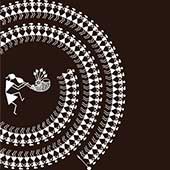Design Resource
Warli Festivals
lnfographic map on the Warli community festivals
by
A group of students from IDC, IIT Bombay resided with a Warli-artist’s family (The Nakhre) in Kalamvihira, a village in Palghar, Maharashtra, for five days in April 2019. We spent our days immersed in their culture, absorbing their ways of life. The primary focus was to learn more about Warli art, the style of Warli painting, the stories behind it and understanding their living conditions. Our final output was an illustrated 1*2m Warli painting using their traditional methods and tools, depicting our experience of the Warli Tribe, their traditions and agriculture during the stay with the Nakhre Family.
Why again?
Because of its rich culture, out of curiosity, I separately collected information about their traditions around agriculture and festivals, solely based on the daily lifestyle of the people in Kalamvihira and Pathardi, Palghar District and created an ”Annual timeline of the Warli Tribe” here. I wanted to use this information as a part of a project and DES seemed like a good starting point for that is in the form of a visualization.
Final Output - Ongoing.
Context
Warli Paintings are believed to be one of the oldest forms of tribal art, originating from Maharashtra, India. The Warli culture is centered around the concept of “Mother Nature” as they greatly respect/worship nature and wildlife for their resources (food and everyday living) and farming is their main way of life (and a large source of food in the tribe). Warli Artists traditionally use the walls in their clay huts as their backdrop/canvas for their paintings. But over time, in order to make these paintings more commercialised, a canvas of red clay (mitti) on white muslin cloth along with white paint (made from rice powder) is used. They mostly cover themes like festivals, harvesting, folk story, celebration, and marriage.
The information collected during the previous project was mainly based on the northern region of Maharashtra i.e. Palghar District since we resided in the Village of Kalamvihira. It was observed that there were three main aspects that influenced their culture and everyday life:
• Agriculture
• Festivals, and
• Water Availability
Hence, they were my main focus in the previous output (link here). For this project, I eventually decided to focus just on the individual festivals and how the Warli community celebrated them.
Motivation
I wanted to convey their warli culture better through a visualization hence, being able to easily identify relevant information about the given festival. I’m hoping that this also serves as a way of lightly familiarising and introducing an aspect of their culture to people new to it.
I also wanted to experiment and improve my information visualisation and visual design skills through this project.
Objective
My initial aim was to create a large poster, using the same information about the ”Annual calendar of the Warli Tribe“ and create a better version of it, with more focus on the visuals. Over time, I decided to get more specific and the aim morphed into creating an infographic on, ”How the Warli tribe/community celebrates their festivals”.



